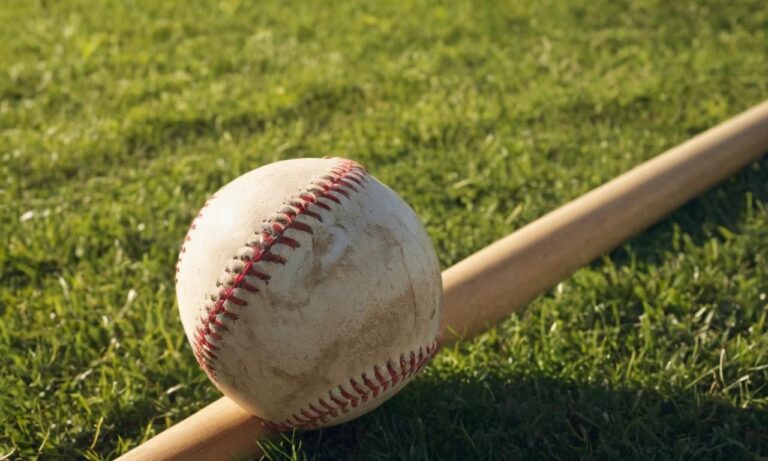Baseball, a sport deeply embedded in the fabric of American culture, revolves around a small yet pivotal element—the baseball ball. In this comprehensive exploration, we delve into the nuances of this iconic orb, examining its composition, evolution, and significance within the sport.
The Anatomy of a Baseball Ball
At first glance, a baseball ball may seem simple, but its construction involves careful consideration of materials and design. The outer layer, made of leather, provides the tactile feel and durability essential for the game. Beneath this exterior lies multiple layers of winding, typically composed of wool and cotton, creating the ball’s core.
Evolution through Time
Over the years, the baseball ball has undergone significant changes. Early baseballs were handmade, featuring a solid rubber core. However, as the sport progressed, innovations led to the introduction of the cork center, providing enhanced performance. The modern baseball, standardized by Major League Baseball, now consists of a rubber-coated cork center surrounded by layers of yarn and encased in leather.
The Role of the Baseball Ball in Gameplay
The baseball ball is more than a mere accessory; it is the focal point of the game, dictating the pace and strategy of play. Pitchers meticulously select balls based on factors such as grip and aerodynamics, aiming to gain a competitive edge. Hitters, on the other hand, must skillfully connect with the ball to send it soaring across the field.
Innovations and Controversies
Throughout baseball’s history, the ball has been at the center of various controversies. Changes in manufacturing processes, alterations to the ball’s composition, and accusations of „juiced” balls have sparked debates among players, fans, and analysts. These controversies highlight the delicate balance between tradition and progress within the sport.
Collectibles and Memorabilia
The baseball ball extends its influence beyond the playing field, transcending into the realm of collectibles and memorabilia. Autographed balls, especially those associated with historic moments or legendary players, hold immense value for enthusiasts and collectors alike.
The Cultural Impact
Beyond its role in the game, the baseball ball has become a symbol ingrained in popular culture. Whether depicted in movies, literature, or art, the iconic imagery of a baseball being pitched, hit, or caught evokes a sense of nostalgia and Americana.
Conclusion
In conclusion, the baseball ball stands as a testament to the enduring legacy of America’s pastime. Its evolution, role in gameplay, controversies, collectible allure, and cultural impact collectively contribute to the rich tapestry of baseball history. As we continue to witness the sport’s evolution, the baseball ball remains a timeless and integral element, connecting generations through the love of the game.
Innovations in Baseball Ball Technology
The world of baseball continues to witness innovations in ball technology, influencing the dynamics of the game. Advancements in materials, aerodynamics, and manufacturing processes have spurred a new era in baseball ball design. The quest for optimal performance has led to the exploration of synthetic materials, nanotechnology, and data-driven design, shaping the future of the iconic orb.
Materials Revolution
Traditional leather may soon share the spotlight with cutting-edge materials like high-performance polymers and advanced composites. These materials offer enhanced durability, consistency, and performance characteristics, challenging the longstanding dominance of leather in baseball ball construction.
Aerodynamics and Trajectory
Understanding the aerodynamics of a baseball in flight has become a focal point for researchers and manufacturers. Computational simulations, wind tunnel testing, and real-time data analysis contribute to refining the design for optimal trajectory, influencing pitching strategies and hitting techniques.
Environmental Considerations
In an era of increased environmental consciousness, the baseball industry is exploring sustainable alternatives for ball production. Biodegradable materials, eco-friendly manufacturing processes, and recyclable components are gaining traction, aligning with broader efforts to reduce the ecological footprint of the sport.
The Globalization of Baseball
As baseball expands its reach beyond traditional strongholds, the baseball ball plays a pivotal role in adapting to diverse playing conditions. Different climates, altitudes, and field surfaces demand versatile ball designs. The globalization of the sport introduces new challenges and opportunities for ball manufacturers to cater to a worldwide audience.
| Challenges | Opportunities |
|---|---|
| Adapting to varied climates | Market expansion and increased sales |
| Maintaining consistency in different altitudes | International collaborations and partnerships |
| Suitability for diverse field surfaces | Global brand exposure and recognition |
Frequently Asked Questions
- Q: What materials are used in modern baseball balls?
A: Modern baseballs incorporate a mix of traditional leather, high-performance polymers, and advanced composites for improved durability and performance. - Q: How do advancements in aerodynamics impact the game?
A: Improved aerodynamics influence pitching strategies and hitting techniques, contributing to a more dynamic and strategic gameplay experience. - Q: What initiatives are in place for environmentally friendly baseball balls?
A: The industry is exploring biodegradable materials, eco-friendly manufacturing processes, and recyclable components to align with environmental sustainability goals.
Zobacz także:

